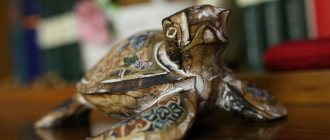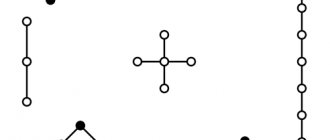- Interpretations for different categories of people
- Depending on the location of the figure
- Detailed description of the image
When fortune telling on wax, the figure of a hare or rabbit is a symbol of fear, shyness, anxiety, and unwillingness to take responsibility for one’s actions. It foretells events that will negatively affect the morale of the fortuneteller. In some cases, this sign promises changes related to love relationships and family, which will be neutral or positive; and also predicts success in professional activities.
Interpretations for different categories of people
Sometimes there is a relationship between the prediction and the gender of the fortuneteller:
- A man who gets the figure of a hare during a wax fortune-telling is embarrassed to make acquaintance with the girl he likes. Someone who is already in a relationship is frightened by its too rapid development, and a married person doubts that he will be able to support his family, because due to problems at work he is threatened with dismissal
- For a woman, a hare or rabbit promises an obsessive suitor who will pursue her in every possible way. It is also possible that there is a life situation that the lady is afraid of not being able to cope with. If the figure looks like a rabbit, but is very vague, the fears that overcome the woman will turn out to be groundless
If the question of fortune telling is related to work, use the following meanings:
| The fortuneteller's profession | The meaning of the hare (rabbit) figure |
| Service workers | Fate has prepared a meeting with an overly demanding client who will show dissatisfaction even if the service is provided flawlessly |
| People associated with science and teaching | The student will discourage the teacher with his knowledge, and the scientist will discover that he was mistaken about some data or his experiment gave false results |
| Representatives of law and justice, military | Someone will try to intimidate the fortuneteller, trying to evade responsibility |
| Financiers | An annoying error in documentation will bring a lot of anxiety and worry. A bank employee may have to be the victim of a robbery at work, which will cause him significant emotional harm |
| Vehicle drivers, machinists and pilots | A person will find himself in a situation where he will feel fear for his own life and that of others. |
| Those involved in show business and creative individuals | A sign that the fortuneteller is in danger from fans or ill-wishers |
| Doctors | You will have to work in unsuitable conditions, saving a person whose health is of great concern. A novice doctor or physician will experience a feeling of fear during the first independent manipulation |
| Private entrepreneurs, directors of enterprises | At the enterprise entrusted to the person, not everything is fine with financial documents or compliance with safety regulations. A visit from regulatory authorities is possible |
Job
A hare on coffee grounds next to a large tree is a great sign for starting a new business. It will definitely be successful, so you don't have to worry. The main thing is to make the right plan and distribute financial resources.
Also, on coffee grounds, the interpretation of a hare speaks of material wealth if the adjacent symbols in the image are lines and dots.
Soon you will have a chance to earn enough money to cover your previous debts and become profitable.
A hare in coffee grounds at the bottom of a cup symbolizes the inability to think sensibly. You should not be afraid of difficulties, but find ways to overcome them. Constantly being scared only adds more stress, which negatively affects the work process. Take a few days off and get back to work.
In fortune telling with coffee grounds, a rabbit has good meaning for creative people. Success in art and creative fertility awaits you. Against this background, your financial condition will definitely improve.
Depending on the location of the figure
The place in the container of water where the figure is located in relation to the fortuneteller is important:
- On the contrary (far) - a person is in danger, but he does not take it seriously. Two hares nearby in this position indicate distrust of the one who declares his love
- On the contrary (close) - something will happen soon that will make you worry about the consequences or results of the matter
- On the left - something causes excitement in the fortuneteller, but he is not able to understand what exactly. You should be more attentive to everything that happens around you and carefully perform important tasks
- On the right - a rabbit in this position indicates the likelihood of becoming a victim of slander or gossip, or that a person is afraid of suffering from deception
The figurine is in the center of the bowl - because of his fear, the fortuneteller will miss a profitable chance that could change his fate for the better.
Hare
The meaning of the word Hare according to Efremova: Hare - 1. A small, timid animal with long hind legs, long ears and a short tail. // Fur, the skin of such an animal. 2. Same as: hare meat. 3. decompression Stowaway, spectator, etc. 4. decompression Same as: bunny (1*).
The meaning of the word Hare according to Ozhegov: Hare is a spectator who has entered somewhere without a ticket.
Hare.
His fur.
Hare.
Stowaway passenger
. Hare.
An animal of a detachment of rodents, with long ears and strong hind legs.
Hare in the Encyclopedic Dictionary: Hare - (lat. Lepus) - constellation of the Southern Hemisphere.
The meaning of the word Hare according to the Symbolism Dictionary: The Hare is a Lunar animal and an attribute of all lunar deities. Represents rebirth, the return of youth, as well as intuition and light in darkness. Very often a hare
associated with sacrificial fire and life passing through death.
Everywhere the hare
is a symbol of fertility and personifies women's menstrual cycles;
this is the key to love, timidity, seduction, worldly wisdom, speed, agility. The hare
on the moon appears almost everywhere in mythology and, being a lunar animal, along with the dog and lizard, it serves as an intermediary between man and the lunar deities.
In the West, the white hare
symbolizes snow, the March
hare
- madness.
The hare's foot or head serves as a talisman against witches, but the hare
often acts as a servant or ally of the witch.
In African mythology, the Hottentots the hare
with the moon.
Among the American Indians, the Great Hare
Manabozo is the father and guardian, the creator and transformative force that changes the animal nature of man.
He plays the role of the Hero-Savior, the Creator, the Hero of the Dawn, the personification of Light. This is the Great Manitou, who lives on the moon with his grandmother; giver of all waters, lord of the winds and brother of snow. His late transformation from cunning to hero indicates the formation of a more integral personality. As a cunning man, he proves himself to be agile and quick-witted, able to outwit a dull, cruel force: he killed a snake, or a fish that devours people. In Buddhism, the hare
was carried by Buddha to the moon, which meant complete self-sacrifice.
When Buddha was hungry, the hare
offered himself as food and jumped into the fire himself.
In Celtic epic, the hare
is considered an attribute of the lunar deities and the gods of the hunt, and the latter are often depicted holding a hare in their hands.
In China, the hare
is the Moon, the feminine power of yin, the consort of the emperor, longevity, the fourth animal of the Twelve Earthly Branches of the symbolic animals of the Buddha.
A hare
on the moon with a pestle and mortar makes up the elixir of immortality.
The hare
is the guardian of wild animals.
The white hare
is a deity, the red hare is good luck and successful reign.
For lunar festivals, figures of white rabbits were made. In Christianity, the hare
signifies fertility and lust.
The white hare
at the feet of the Virgin Mary signifies triumph over lust.
The hare's defenselessness symbolizes those who put their trust in Christ. In Egypt, the hare
represents dawn, beginning, opening, rise and periodicity.
It is the emblem of Thoth and is associated with the Moon. In the European tradition, the Easter bunny,
rabbit or bunny symbolizes dawn and new life, is an attribute of the moon goddess with a hare's head, apparently Oestra (among the Teutons) or Eostra (among the Anglo-Saxons), who gave the name Easter to Easter.
For this reason, the Easter Bunny
symbolizes rebirth, resurrection, as well as the birth of a new moon.
The Easter Bunny
lays an Easter egg.
In Greco-Roman symbolism, the Easter bunny
symbolizes fertility and promiscuity.
The hare
is an animal messenger and an attribute of Hermes (Mercury), as well as Aphrodite and Eros.
Cupid is often depicted with hares. For Jews, a hare
is an unclean animal.
In Indian and Buddhist art, the hare
appears with a partial moon. In Norse mythology, hares serve Freya. Among the Teutons, the moon goddesses, Holda and Harke, or Harfa, always appear accompanied by hares carrying torches after them.
The meaning of the word Hare according to the synonym dictionary: Hare - oblique
The meaning of the word Hare according to Ushakov’s dictionary: HARE
hare, m. 1. Mammal from the order of rodents.
Hunting for hares. || Roast of this animal. Today we have hare
in sour cream for main course.
|| The fur of this animal. Collar for a fur coat made of a hare. 2. Stowaway (colloquial). We call stowaways hares. Chekhov. We got to Samara with hares in a passenger car. M. Gorky. || One who penetrates somewhere. without a ticket, without the right to enter (colloquial). Sneaking into the theater as a hare. The sea hare
is a genus of seal in the White Sea.
The meaning of the word Hare according to Dahl's dictionary: Hare
(according to Pavsky hare) m. generic name of an animal from the category of rodents, Lepus; bonfire quickly, smol. eagle hurry up, orenb. Tatar Kuyan, Sib. Uskan, Psk. kriven, humorous oblique, short, lop-eared; novg. biley (belyay, hare). Among the hunters of the yars
Definition of the word "Hare" according to TSB: Hare - see Hares.
Hare - Hare (lat. Lepus) constellation of the Southern Hemisphere of the sky; the two brightest stars are 2.6 and 2.8 visual magnitudes. The best conditions for observations are in November - December. Visible throughout the entire territory of the USSR. See starry sky.
Anchor Hare Hare
Detailed description of the image
Melted candle wax forms a wide variety of shapes, reminiscent of a hare or rabbit. Each of them has its own meaning.
The most common descriptions of fortune-telling tides:
| The resulting figure | Interpretation |
| Hare with carrot | Symbolizes fear of sexual contact. A man is predicted to have health problems related to the genitourinary area |
| Rabbit head | A person will be able to achieve success, despite his fears and complexes |
| Big and small hares | Worries about the health or fate of children and younger family members. If each hare is a separate figurine, the worries are excessive and in vain |
| Two big hares | A meeting and acquaintance with a person who will become fateful for the fortuneteller. Both hares are visible on one piece of wax - this symbolizes a forced marriage |
| Rabbit with a clock | Success in business or a timely error discovered that could significantly damage your reputation |
| Rabbit jumping | A period favorable for those who doubt their abilities will soon come. The project started at this time will be completed, and the result will be exactly as expected |
| A hare looks out of a hole | The person will try to overcome the phobia by coming face to face with the object of their fear |
Pisces - Cat (Rabbit) characteristics
A person born under the sign of Pisces in the year of the Cat (Rabbit) is a very sweet and friendly person. He is sociable, friendly and sensitive. Thanks to his well-developed intuition, the Pisces-Cat (Rabbit) understands those around him very well and deeply, but it is extremely difficult for him to know himself. He is a mystery not only to those around him, but also to himself. A person born with this combination knows how to please people and easily adapts to circumstances. But his personality is often deceiving. Beneath his modest veneer are business and rational qualities, and his observant and inventive mind helps him avoid unnecessary risks in various matters.
Pisces-Cat (Rabbit) is capable of grasping absolutely everything on the fly. He uses any situation and information to his advantage, making the most of it. This person thinks several steps ahead and gets down to business only when he is confident in his victory. Also, a person born with this combination is an excellent manipulator. He knows how to subtly feel people and literally reads information from their faces. He avoids problematic and conflictual personalities and prefers to communicate with calm and sincere people. Pisces-Cat (Rabbit) loves solitude and prefers to spend his free time in silence, contemplating some beautiful landscape. He values spiritual values and attaches great importance to them.
In the professional sphere, Pisces-Cat (Rabbit) can take on any job, but does not like to place too much responsibility on his shoulders. He is not subject to emotional overload and knows how to organize his work schedule, and thanks to his sociability, he easily gets along with the work team.
A person born with the Pisces-Cat (Rabbit) combination is a sea of emotions and feelings; he loves romantic evenings, trips to beautiful places and small gifts from loved ones. Pisces-Cat (Rabbit), as if created for love. He is passionate, loving, sensual, but easily vulnerable. He chooses a life partner who is balanced and calm, who exudes reliability and stability. He doesn't like people who are too noisy and expressive. But a good relationship will develop with the person with whom you can talk about everything and enjoy simple pleasures, such as a quiet evening by the fire, or swimming in the river. And if Pisces-Cat (Rabbit) meets a person who can understand and accept his difficult character, then strong affection and boundless love are guaranteed. It is worth noting that in love relationships, Pisces-Cat (Rabbit) is original and inventive. He manages to please and surprise his loved one. And, I must say, he likes it when they do the same for him.
Rabbit is a symbol of Catholic Easter
In the Orthodox tradition, Easter cakes and colored eggs are considered the main symbols of Easter. Catholics associate this holiday with the Easter bunny laying eggs. Why did the rabbit (hare) become a symbol of the Resurrection of Christ among Catholics?
In the pagan cults of ancient Germanic tribes, hares were associated with the goddess of dawn and fertility Eastre (in German Easter - Ostern ). Hares and rabbits deservedly symbolized natural fertility .
And Prel is an Anglo-Saxon. Easter monað - named after the goddess of fertility Eastre - Istar (Ishtar, Astarte) Eastre (Eostre), from Proto-Germanic *austron- “dawn” , also the name of the goddess of fertility and spring, sunrise, the holiday was celebrated on the vernal equinox, from * aust - “east, at sunrise” (compare east - east ), from the root PIE * aus- “shine, dawn” . Latin: Aprilis, from Etrus. god Apru (Aplu - Apollo); Proto-Italic *ap(e)ro-, from Sanskrit: apo- “supreme”; Scythian goddess API.
In other pagan cultures, other animals were symbols of the fertility of nature
As Christianity spread across Europe, Christian missionaries adapted
pagan rituals and customs already existing among the people to celebrate the awakening of nature on the day of the vernal equinox , bringing them closer to Christian traditions and holidays. The same thing happened with Easter. The pagan holiday of the spring equinox and the honoring of the goddess Eastre was transformed into the resurrection of Jesus Christ.
They transferred hares and rabbits into the symbolism of Easter, symbolizing fertility and the birth of a new life. An egg, as you know, in ancient pagan cultures signified the birth of a new life.
In England, the word Easter - Easter was first recorded in 1610. For the first time , the story “About Easter Eggs” , describing Easter traditions, was recorded in 1682 by the German professor of medicine Georg Frank von Frankenau .
Frankenau wrote: “In southern Germany, in Alsace, in the Palatinate, as well as in some neighboring areas and in Westphalia, these eggs are called hare eggs. Children are told that the Easter Bunny carries them away and then hides them in the grass and bushes . This makes kids look for them with great zeal for the amusement of adults.” This tradition is observed in Germany to this day.
Since 1888, the Easter Bunny has appeared in the tradition of celebrating Catholic Easter, bringing Easter eggs and becoming a symbol of Easter.
In the New World, they learned about Easter bunnies at the end of the 18th century with the arrival of settlers from Germany. In the United States, the German custom has transformed over the years. Rabbits began bringing American children not eggs, but chocolate and toys as Easter gifts.
Don’t trust the rabbit, he can lure you into his hole, and you will find yourself in the secret world of the Looking Glass, just as Alice, chasing the White Rabbit, ended up in “Wonderland” by Lewis Carroll (Charles Lutwidge Dodgson) - one of the most famous and at the same time the time of the mysterious English writers of Victorian England.
The 1865 novel Alice in Wonderland tells the story of a young girl named Alice who falls through a rabbit hole into an underground fantasy world inhabited by unusual, anthropomorphic creatures. The fairy tale is considered one of the best examples of the literary nonsensical genre, where the author plays with logic, words, meanings and concepts, revealing the paradoxes of life situations.
In all the kingdom of nature, is there any creature less menacing to us than the gentle rabbit? Although today this question may seem completely rhetorical, we find the answer to it in medieval illuminated manuscripts , where we can see the rather strange and surprising role of the hare (rabbit), acting as a cruel killer.
On the pages of medieval manuscripts, Hares pierce a person through and through, dismember and chop knights in half as if they had been doing this since the creation of the world. So what's the deal?
The fact is that the Hare in Catholic Christianity in medieval Europe symbolized not only natural fertility, but also sinful voluptuousness. In other words, according to medieval canons, the hare is the embodiment of the sin of voluptuousness, which destroys the souls of young people, brave knights who fell victims of this vice.
Illuminati manuscripts contain many medieval depictions of these seemingly innocent creatures in an uncharacteristic form - brutal killers.
The Society of the Bavarian Illuminati (German: der Illuminatenorden) is a German secret society founded on May 1, 1776 in Ingolstadt by the philosopher and theologian Adam Weishaupt - an order of perfectors (Perfektibilisten) . This union was supposed to fight superstition and ignorance, spreading enlightenment and morality, as well as the liberal ideas of the European Enlightenment.
The official goal of the Illuminati was the improvement and ennoblement of humanity through the “construction of a new Jerusalem.” Weishaupt argued that an ordinary person by nature is not bad and vicious —it is his environment—the external influence of social institutions, religion, and the state—that makes him bad and sinful. If a person is freed from the pressure of social institutions and begins to be guided exclusively by cold reason and knowledge, problems of morality will disappear by themselves. During the heyday of the “Society of Bavarian Illuminati”, it consisted of approximately 2 thousand people.
Among the illustrations there are drawings where rabbits attack while sitting on snails, and even where groups of peasants fight snails with sticks or where they ride snails and try to ride them.
We, residents of the 21st century, have no less difficulty understanding medieval humor than we did a century ago. And yet we can truly understand the allegorical meaning of medieval humor and can also laugh at these pranks in the pictures, as our medieval ancestors must have done. The humor of the scene comes from this sudden transformation of a completely harmless creature into a dangerous monster endowed with unprecedented power.
A picture from a medieval manuscript - a hare killing a brave knight - is a symbolic image of the destructiveness of the sin of voluptuousness, killing strong and brave knights, and even kings.
So perhaps the fight scene between the knights and the rabbit from Monty Python and the Holy Grail is not so comedic, but rather filled with deep historical symbolism.
On the façade of Notre Dame Cathedral, a righteous man, having thrown away his sword, flees from the sin of voluptuousness (from a rabbit)
In the medieval tradition, the Virgin Mary with a white hare sitting at her feet, indicating the purity and purity of the mother of Jesus Christ, trampling underfoot the sin of voluptuousness.
Images of small white and brown hares (rabbits) going about their business in the field, in medieval art, represent symbols of Christ, and mean purity, innocence, defenselessness, helplessness, submission to fate.
Scenes of rabbits hunting for the souls of people appear on the edges of medieval manuscripts, giving rise to the elegant genre of "rabbit's revenge", which was often used to punish sins such as stupidity and cowardice . In Middle English the nickname Stickhare ("stick hare") means "coward", in medieval illustrations the rabbit means "brave coward".
The hare in ancient Russian manuscripts
Where did the bunny motif come from on Easter cards and candy wrappers? Of course, the Easter Bunny motif came to us from the Western, German tradition. However, the hare motif turned out to be very close to the Russian Orthodox worldview. And that's why.
We often find images of a hare in ancient Russian chronicles, on stove tiles. Our ancestors in Rus' perceived the surrounding nature through the prism of Divine creation, therefore every living creature - man, bird, animal or natural phenomenon was considered God's creation, and it was given a special meaning.
Hare in the miniature "
Words on the dissection of human nature" , 18th century.
The miniature depicts a hare running away from a hunter; it was often likened to a man fleeing the attacks of the devil. We find this metaphor in “The Physiologist” - an old Russian bestiary , where the hare is presented as a symbol of the “perfect husband” who runs away from the “catching nets of the devil”:
“We always catch a hare , it runs into a stone... and keeps it for itself... Look for a stone, too, man, we drive away from the dog, that is, from the demon, who chases the day and eats the human belly.”
The running hare is an ancient Russian symbol of the righteous.
Illustrations of ancient Russian manuscripts often depicted a hare running into stones. This motif appeared as an illustration of the words of the Psalter , Psalm 103 , which describes the creation of the world and how high mountains are intended for deer, and stones are created to serve as “a refuge for the hare . These words also found a spiritual interpretation among our ancestors:
“For man, whose life is easy, like a wall, this stone became a refuge for salvation, on which Christ was crucified .”
Inscription: “And he lays down his humility from the vain things of this world, and falls like a hare from the snares of the devil.” Miniature from the 18th century.
This is an ancient Russian miniature from the old printed Psalter of 1660, which is called “ Stone is a refuge for a hare .
Saint Peter was, like his brother Andrew the First-Called, a fisherman. When Jesus met Peter and Andrew, he said, “ Follow Me, and I will make you fishers of men” (Matthew 4:19). The name Peter (Petrus, from Greek πέτρος - stone; in Aram. כאפא - kypha - stone), which Jesus gave him.
Having become a disciple of Jesus Christ, Peter accompanied Him in all the paths of His earthly life. Peter was one of Jesus' favorite disciples. When Jesus asked the disciples what they thought about Him, Peter said that He was “the Christ, the Son of the living God.” In response, Jesus said:
I tell you: you are Peter, and on this rock I will build My Church , and the gates of hell will not prevail against it; and I will give you the keys of the Kingdom of Heaven : and whatever you bind on earth will be bound in heaven, and whatever you loose on earth will be loosed in heaven. — Mf. 16:18-19
That is why a person, like a hare, runs from the devil and hides in stones, that is, he runs into the bosom of the Church of Christ, finding there the true salvation of the Soul.
Symbols of Easter holiday.
The symbolism of the egg in the pre-Christian era.
How the Scythian monk Dionysius calculated the date of Easter
Earliest Viking Trade
How the Scythian monk Dionysius calculated the date of Easter









